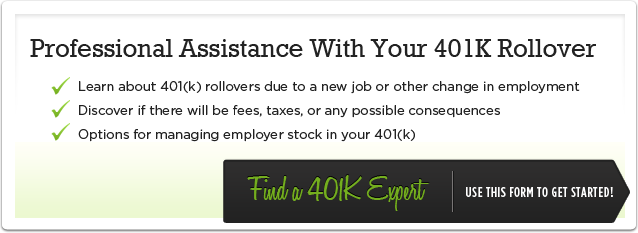
Have you recently left an employer and wondering what to do with your 401(k)? There are many, many different choices with varying tax and investment consequences. This, and important decisions like these, require serious thought and review. Often, the options are confusing and many make the unfortunate decision to just take their full distribution and end up paying both penalties and income taxes with this choice. This is seldom the best option.
Generally, what you’re going to want to do falls into a couple of different categories. You’re either going to want to take it to your next employer, or do a trustee to trustee transfer into an IRA somewhere. No surprise, there are pros and cons for the many variations with both of these general choices. A common rule of thumb is that if you have a small balance, under $20,000 for example, then it probably makes the most sense to roll it over to your next employer for consolidation. Too many small accounts creates too many fees and outweighs the overall investment benefits.
If, however, you have a larger 401(k), you might want to think about a handful of options:
Now, the first question to ask is do you have any employer stock in your 401(k)? There are specific rules far too detailed to go into this article; however, you do need to understand that employer stock can create some unique and potentially very important consequences should you choose to move it. You may want to treat the employer stock contribution differently than the rest of the assets in your plan. If you don’t have any employer stock in your plan, keep on reading and don’t worry about this. If you do, make sure you look up the QDRO standards and fully understand both your basis in the stock and the potential income tax consequences of being treated both ways.
So, you’ve decided that you might want to roll over your 401(k). You have plenty of options and can certainly do this either on your own or with an advisor. If you choose to do it with an advisor, they will be more than happy to talk you through the various consequences and tax treatments of the options, but generally you’re going to want to do a trustee-to-trustee transfer to make sure that there are no questions in terms of the tax treatment of the case. Some advisors will use mutual funds. Others will have you move it into a more general brokerage account or an advisory account where the investment options will be much more varied. Again, all these options are better or worse depending upon you and your current situation; age, income, expenses, etc. For example, some advisors might recommend rolling over into an annuity. If you are young and early in your retirement plan, this is not likely the best choice. If, however, you are within five years of retirement, this may be an option that you might want to consider. Just know that it is a more expensive option and the annuity structure itself is tax exempt. As this is already tax-exempt money, you end of paying for something that you don’t necessarily need.
Rolling over into a brokerage or an IRA either with an advisor or without an advisor, the pros of this will be that the options from an investment standpoint are virtually unlimited. The cons are that you are moving away from a structure that you are not paying expenses and transaction fees and loans, and potentially into an environment where you need to pay attention to transaction fees, commissions, and other kinds of investment expenses.
Your rollover step-by-step:
First, contact your current 401(k) provider. You’ll likely find a 1-800 number and the other contact information on your statement. These days, you might have several different options. Some custodians may only require a phone call; others may have ask you to complete what might be called “distribution paperwork”. You should talk to them first and fully understand your options before proceeding. Generally, you are going to need to know exactly what you are going to do with the money before you call them, but you might go ahead and give them a quick call and find out if there is paperwork that needs to be completed so you can get that mailed to begin reviewing. Once you have the forms and decided what you are going to do with this money, you are now prepared to begin filling in the paperwork. Again, make sure that if you are moving money into another account, you are doing it as a trustee-to-trustee transfer, and you don’t physically receive any money made out to you. It may be mailed out to you, but it should be made out in the name of the new custodian.
Once you’ve completed and submitted the forms, the next is to follow up and make sure that the money gets to you in a timely manner. These days, most of the large custodians will get your money to you within a week or two., It is important to note what is going on in the stock market when you make these transfers as the money will be sold, you will get a check for cash, and then it will be reinvested. This means you will likely be out of the market for at least a couple of weeks. Again, depending on the market, this could work in your favor or cost you. The advice is to make sure you’re aware of what is happening during this time and be certain about the choices you are making. Talking with a professional can be very helpful in terms of fully understanding all of your options and making smart choices in terms of what to do with your 401(k).